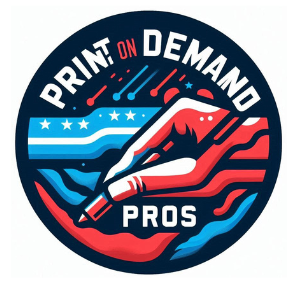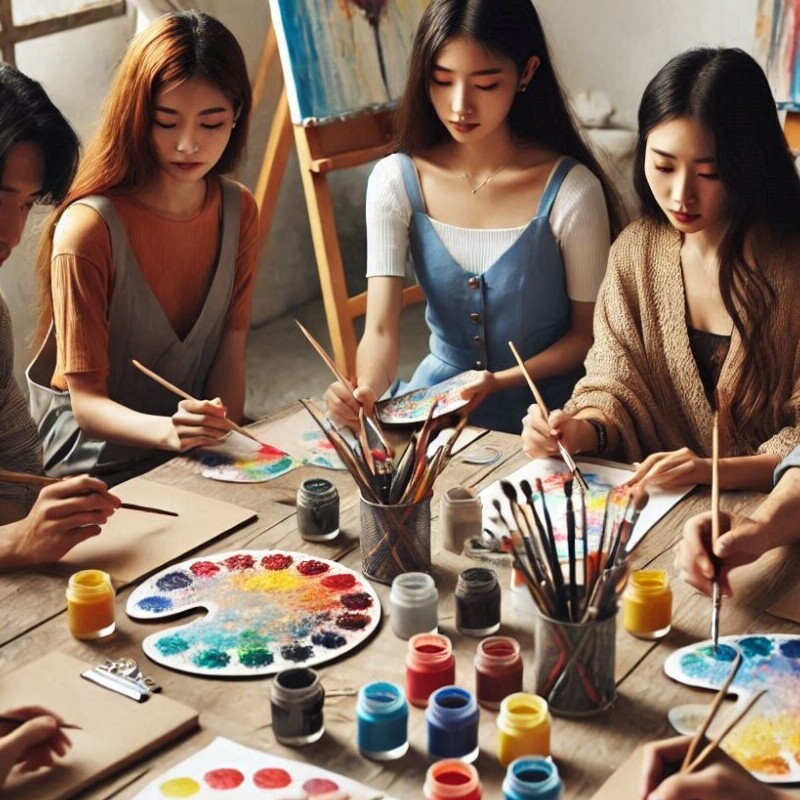Understanding color theory in the print world kicks off with the color wheel. This classic tool, introduced way back by Isaac Newton in 1666, classifies colors into categories like primary, secondary, and tertiary. These basics serve as your guide for crafting effective color combinations.
Now, in the print arena, it’s all about the subtractive color model, fondly known as CMYK. The colors cyan, magenta, yellow, and black get mixed to produce the final image hues you see on your print materials. It may feel like magic, but really it’s science helping you achieve color greatness.
Don’t mix it up with the RGB model, which is more at home on digital screens. While RGB mixes red, green, and blue to craft its palette, CMYK works for printed materials like brochures and posters, ensuring what you see on paper stays true to your vision.
To nail that perfect color for your print project, it’s important to grasp both models’ roles. Your choice impacts not just visuals but also ensures consistency in how a design leaps from screen to paper.
Tackling color theory is your first step to mastering color in your creative toolkit. Treat it like a language—once you know it, the possibilities for your print designs stretch wide open.
The Role of Colors in User Experience and Perception
Colors shape how we feel about almost everything we come into contact with. They’re the silent mood setters, heavily influencing perception right off the bat. Over half of our first impression of a product—hitting upwards of 90%—rests purely in its color. Yeah, it’s kind of a big deal.
Choosing the right colors goes beyond personal taste when designing user interfaces. It’s like crafting a story without words. The palette you pick can steer emotions, affect behaviors, and play a huge role in usability. Whether calming users with cool tones or electrifying them with vibrant ones, colors really are your backstage pass to the mind.
Bringing statistical insights, we’ve seen how wise color choices can boost user engagement and conversions. A branding or UI overhaul with thoughtfully selected hues often means better user experiences. Colors that resonate with the intended audience can enhance interaction and lead to desired actions with way more oomph.
To get this right, think about your audience and the kind of emotional response you want from them. Test different palettes, see how users react, and fine-tune based on feedback. Navigating these decisions skillfully can immensely improve user engagement and satisfaction.
Real-world scenarios underline this effect. Ever noticed how banking apps often use blue? That’s trust and reliability talking. It’s about creating experiences where users feel at ease and know exactly what to expect.
Color Harmony Schemes and Their Applications
Creating visual balance using color harmony is a game-changer in design. It’s all about the colors playing nice together, providing a feast for the eyes. This harmony makes the whole user experience more pleasing and cohesive, like a well-orchestrated symphony.
Now, color schemes are the secret sauce to achieving this harmony. Let’s look at a few. Monochromatic schemes keep it simple and sleek by using various shades of a single color. They’re perfect for when you want uniformity with a hint of depth and dimension.
Then there are analogous schemes. Picture colors boarding the same bus on the color wheel. They’re neighbors, creating a smooth transition in your design with a naturally pleasing effect.
Complementary schemes, on the other hand, go for that ‘opposites attract’ vibe. Picking colors opposite each other on the wheel brings high contrast and vibrant visuals. It captures attention but should be used judiciously to avoid overwhelming your audience.
Examples in the wild? Well, check out minimalist print designs using a monochromatic approach for that clean look. Or vibrant company logos using complementary colors to make their mark.
Color harmony really enhances user experience. It’s like having the best playlist accompanying your visuals, ensuring everything just feels right. Experience, after all, is in the details, and colors knit those details together beautifully.
Applying Color Theory: Bridging Print and Digital Media
Navigating color in today’s media landscape requires a keen eye and smart strategy. Switching from digital to print can be like traveling between worlds, each with its own set of rules.
For starters, picking the right color model is crucial. Digital mediums rely on RGB, thanks to its vibrant results on screens. But when it’s time for your designs to leap off the screen and onto paper, it’s CMYK that holds the fort, ensuring colors remain true to your vision.
Keeping color consistent between these media requires understanding the limitations and capabilities of each. Colors can vary greatly between screen and paper, sometimes causing surprises when your digital masterpiece gets printed.
To bridge this digital-print gap effectively, consider software that helps visualize print results on screen. Use mockups and proofs to catch any discrepancies beforehand. This helps in fine-tuning the color details and ensuring what you see is what you get.
It’s all about usability when integrating color theory into design. The goal is to enhance functionality while maintaining aesthetics, which ultimately leads to a more engaging and user-friendly product.
Apply these insights, and you’ll find that your designs don’t just look good—they provide an experience. It’s this thoughtful application of color theory that makes all the difference in effective and memorable design.




I didn’t have a clue that there was a different colour mix between media and paper until I read this article. It’s a very detailed and explains everything perfectly. My daughter is a very keen painter and is good at mixing her colours, but wants to take her work to the next level whilst also learning to create digital art on her iPad. Is there an app you would recommend for visualizing digital to paper?
Thank you for your comments.
You can go here to learn more.